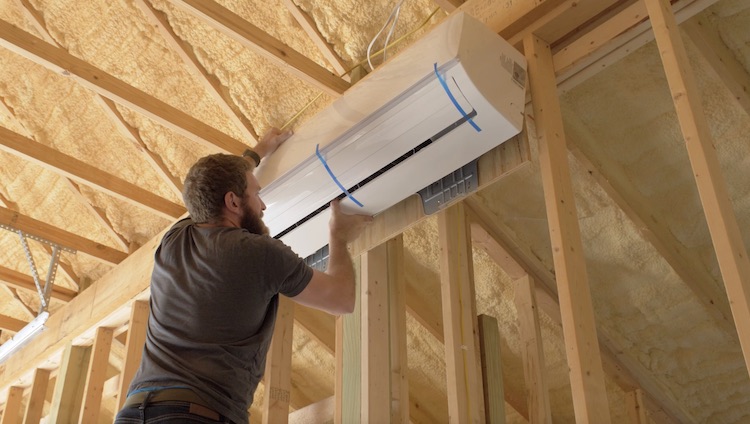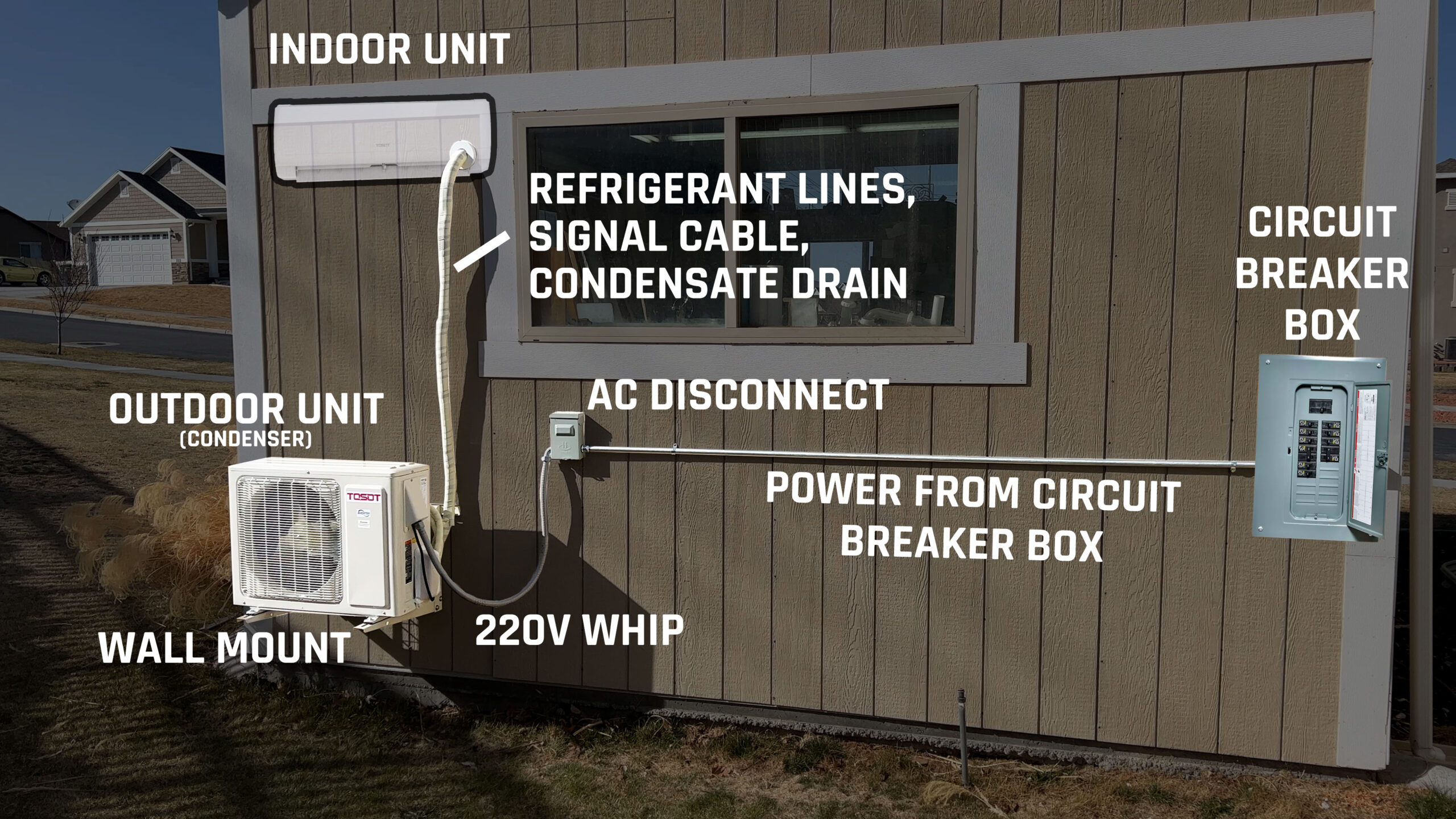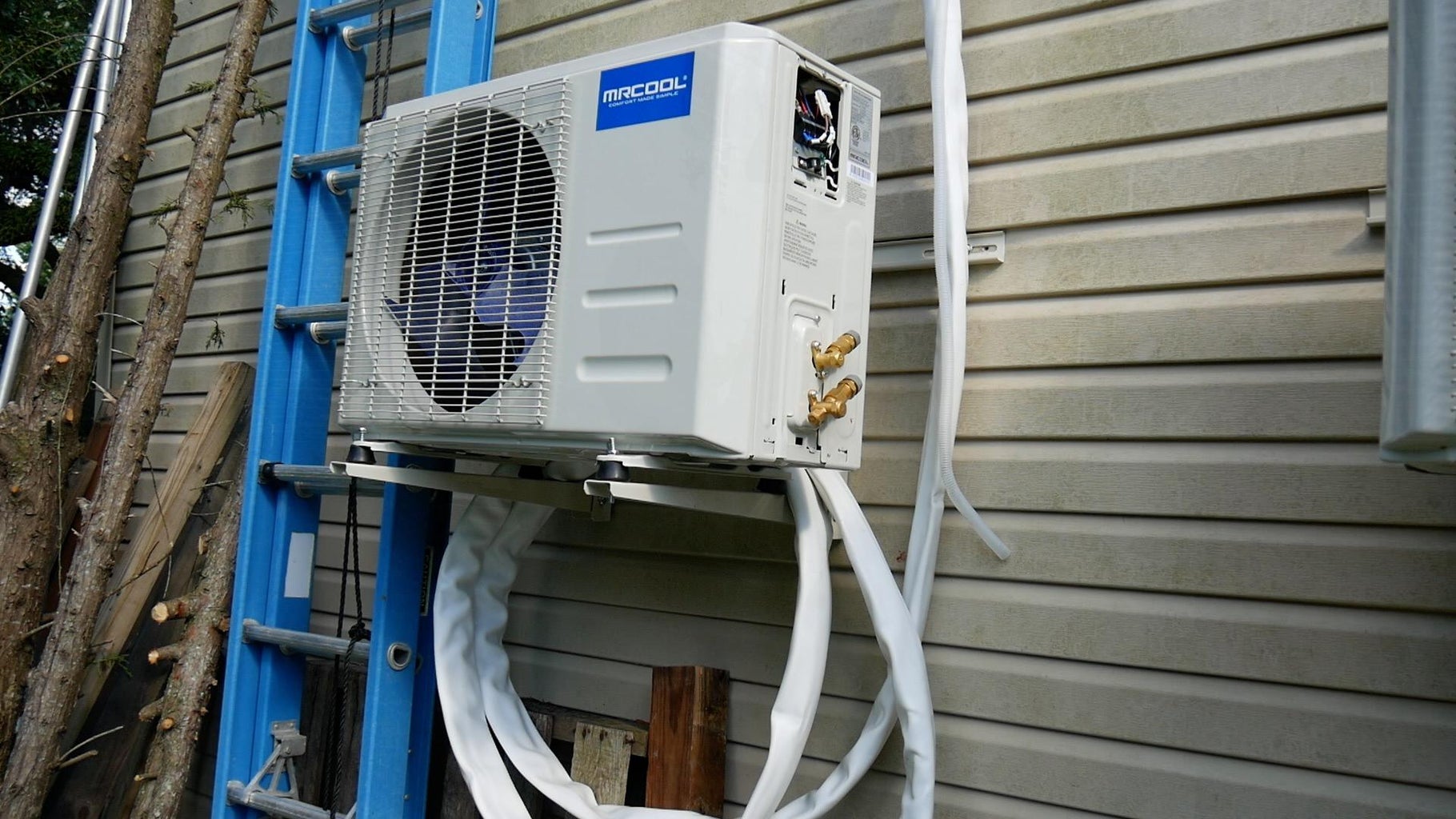Installing Mini Split On Second Floor

Mini Split Systems: A Second-Floor Solution?
Ductless mini-split systems have gained significant popularity as efficient and versatile heating and cooling solutions for homes. Their ease of installation, zone-specific temperature control, and potential energy savings make them particularly attractive for addressing the challenges of conditioning second-floor spaces. This guide delves into the specifics of installing a mini-split system on the second floor, covering key considerations, popular models, and factors influencing overall cost.
Why Choose a Mini Split for the Second Floor?
Second floors often present unique heating and cooling challenges. Heat rises, making them warmer in summer and potentially colder in winter. Mini-splits offer several advantages in addressing these issues:
- Zoned Comfort: Each indoor unit (head) operates independently, allowing for precise temperature control in individual rooms. This is ideal for bedrooms, offices, or guest rooms on the second floor that may have different heating or cooling needs.
- Energy Efficiency: Mini-splits are known for their high SEER (Seasonal Energy Efficiency Ratio) and HSPF (Heating Seasonal Performance Factor) ratings. They avoid the energy losses associated with ductwork, making them more efficient than traditional central HVAC systems.
- Ease of Installation: While professional installation is recommended, mini-splits generally require less invasive installation than ducted systems. This can be particularly appealing when retrofitting older homes.
- Quiet Operation: Mini-split systems are typically quieter than window units or traditional HVAC systems, both indoors and outdoors.
- No Ductwork Required: Avoids the cost and hassle of installing or modifying ductwork, which can be significant in older homes.
Considerations Before Installation
Before committing to a mini-split installation on the second floor, consider the following:
- Room Size and Layout: The size and layout of the rooms to be conditioned will determine the appropriate BTU (British Thermal Units) rating for each indoor unit. Too small a unit will struggle to heat or cool the space effectively, while an oversized unit may cycle on and off frequently, reducing efficiency and comfort.
- Insulation: Proper insulation in the walls and ceiling of the second floor is crucial for maximizing the efficiency of any HVAC system, including a mini-split. Address any insulation deficiencies before installation.
- Sun Exposure: Rooms with significant sun exposure may require larger capacity units. Consider the direction the windows face and the amount of shading they receive.
- Electrical Capacity: Ensure your electrical system can handle the additional load of the mini-split system. Consult with a qualified electrician to verify the capacity of your electrical panel and the wiring to the outdoor unit.
- Local Codes and Regulations: Check with your local building department for any permits or inspections required for mini-split installations.
- Condensate Drainage: Each indoor unit produces condensate (water) that needs to be drained. Plan for proper drainage, either through gravity or a condensate pump.
Popular Mini Split Brands and Models
Several reputable brands offer high-quality mini-split systems suitable for second-floor installations. Here's a brief overview of some popular options:
Daikin
Daikin is a leading manufacturer of HVAC systems, known for their innovative technology and energy-efficient products. Their mini-split systems often feature advanced filtration and smart home integration.
Models to Consider: Daikin Emura, Daikin Aurora
- AFUE: N/A (Mini-splits do not have AFUE ratings)
- SEER: Up to 24.5
- HSPF: Up to 12.5
Mitsubishi Electric
Mitsubishi Electric is another well-regarded brand, renowned for their reliable and quiet mini-split systems. They offer a wide range of models to suit various needs and budgets.
Models to Consider: Mitsubishi Mr. Slim, Mitsubishi Hyper Heat
- AFUE: N/A
- SEER: Up to 33.1
- HSPF: Up to 13.5
LG
LG offers a range of mini-split systems with stylish designs and user-friendly features. Their systems often incorporate smart technology and advanced air purification capabilities.
Models to Consider: LG Art Cool, LG Dual Inverter
- AFUE: N/A
- SEER: Up to 27
- HSPF: Up to 12.4
Fujitsu
Fujitsu is known for its efficient and reliable mini-split systems, offering a range of options for different climates and applications. They have a reputation for quality and long-lasting performance.
Models to Consider: Fujitsu Halcyon, Fujitsu General
- AFUE: N/A
- SEER: Up to 33
- HSPF: Up to 14.2
Note: SEER and HSPF ratings can vary depending on the specific model and size of the unit. Always check the manufacturer's specifications before making a purchase.
Installation Process and Cost
While DIY installation is possible for some homeowners, professional installation is highly recommended to ensure proper performance and safety. A qualified HVAC technician will have the expertise and tools necessary to properly size the system, install the units, and connect the electrical and refrigerant lines.
Typical Installation Steps:
- Site Assessment: The technician will assess the rooms to be conditioned and determine the appropriate BTU rating for each indoor unit.
- Mounting Indoor Units: The indoor units are mounted on the wall, typically near the ceiling.
- Drilling a Hole for Refrigerant and Drain Lines: A small hole is drilled through the wall to connect the indoor unit to the outdoor unit.
- Mounting Outdoor Unit: The outdoor unit is mounted on a concrete pad or wall bracket.
- Connecting Refrigerant and Drain Lines: The refrigerant lines and drain lines are connected between the indoor and outdoor units.
- Electrical Connections: The electrical connections are made to both the indoor and outdoor units.
- Vacuuming and Charging the System: The system is evacuated to remove air and moisture, and then charged with refrigerant.
- Testing and Start-Up: The system is tested to ensure proper operation.
Cost Breakdown
The cost of installing a mini-split system on the second floor can vary depending on several factors, including:
- Number of Indoor Units: The more indoor units you need, the higher the cost.
- BTU Rating of Units: Larger capacity units are more expensive.
- Brand and Model: Premium brands and models with advanced features typically cost more.
- Installation Complexity: Difficult installations, such as those requiring extensive wiring or modifications to the building structure, will increase the cost.
- Labor Costs: Labor costs vary depending on the location and the experience of the installer.
As a general estimate, expect to pay between $3,000 and $8,000 for a multi-zone mini-split system installed on the second floor. This includes the cost of the equipment and labor. Single zone systems will be at the lower end of the range.
Warranties and Maintenance
Most mini-split systems come with a manufacturer's warranty that covers parts and labor for a specified period. Be sure to read the warranty carefully to understand the terms and conditions.
Typical Warranty Coverage:
- Parts: 5-10 years
- Compressor: 7-12 years
- Labor: 1-2 years (may vary)
Maintenance Tips:
- Clean Air Filters Regularly: Clean the air filters every 1-3 months to maintain optimal performance.
- Clean the Outdoor Unit: Remove any debris, such as leaves and branches, from around the outdoor unit.
- Inspect Refrigerant Lines: Check the refrigerant lines for leaks or damage.
- Schedule Professional Maintenance: Schedule annual professional maintenance to ensure the system is operating efficiently and to identify any potential problems early.
Conclusion
Installing a mini-split system on the second floor can be an excellent way to improve comfort, energy efficiency, and temperature control. By carefully considering your needs, researching different brands and models, and working with a qualified installer, you can enjoy the benefits of zoned comfort for years to come. Remember to factor in the initial investment cost and the long-term energy savings potential when making your decision.










